Breaking News
India Launches Major Call for Tender to Acquire Advanced Lightweight Artillery Guns.
On 21 August 2024, the Indian Army launched a major tender for the procurement of advanced lightweight artillery cannons, with a total budget of 848.5 million USD. This tender is part of a wider initiative to modernize India's military capabilities by replacing outdated artillery systems with modern, lighter equipment that incorporates advanced technologies. The initial goal is to acquire 400 cannons, with the potential to expand this number to over 1,200 units to the army's operational capacity.
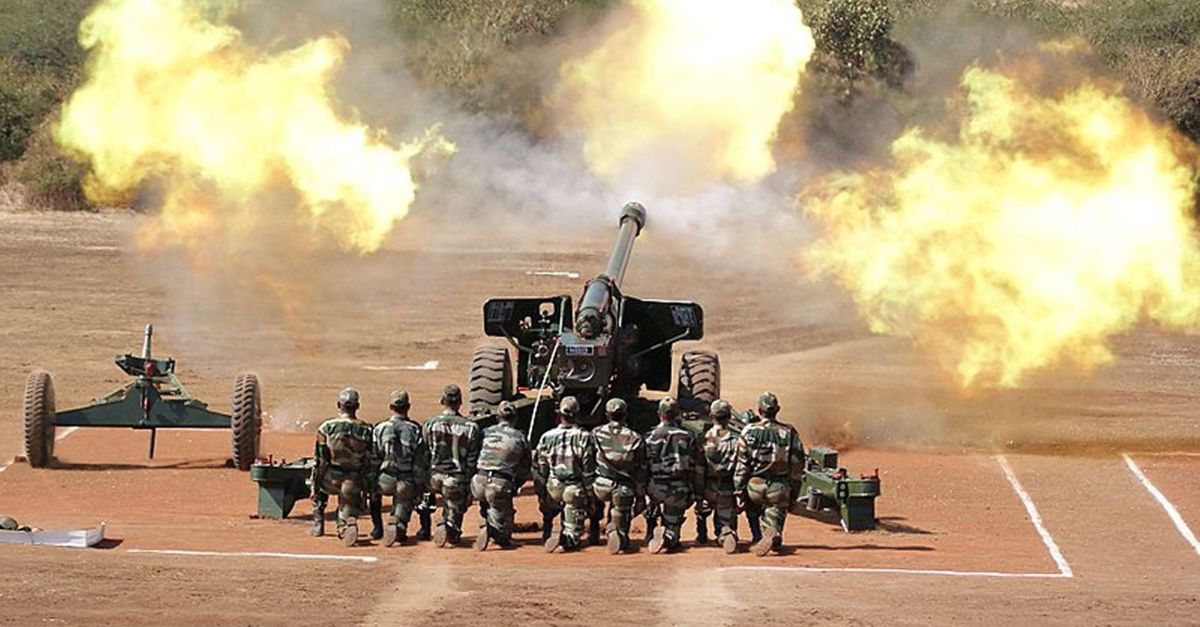
Indian Army launched a Major Tender for the Procurement of Advanced Lightweight Artillery Howitzer (Picture source: Wikimedia)
One of the key aspects of this tender is its alignment with the government's "Make in India" initiative. The contract mandates that over 50% of the components of the new systems must be manufactured locally. This requirement aims to boost domestic production, reduce dependency on imports, and promote India's technological self-sufficiency in the defense sector.
Several major Indian defense companies have shown interest in this project. Larsen & Toubro (L&T), for example, is already collaborating with Hanwha Defense from South Korea to produce the K9 Vajra-T, a 155mm/52 caliber self-propelled howitzer, and has also partnered with Nexter, a French company, to propose the towed cannon TRAJAN. Bharat Forge is presenting the BHARAT 52, a 155mm/52 caliber towed howitzer, as well as an ultra-light howitzer named Mountain Artillery Gun-Extended Range (MAG-ER), designed for operations in mountainous terrain. Tata Advanced Systems Ltd (TASL) might, in turn, submit a lightened version of the Advanced Towed Artillery Gun System (ATAGS), developed in collaboration with the DRDO, and already lauded for its exceptional range and accuracy.
Other contenders such as Adani Defence and Aerospace are also in the running. Adani is proposing a towed version of the ATMOS, a truck-mounted howitzer known for its modularity and robustness. Lastly, AWEIL, a public enterprise, plans to participate with a towed cannon based on the Dhanush, an improved version of the Bofors FH77B, which has already proven its reliability in various trials.
Advanced Towed Artillery Gun System (ATAGS)
The ATAGS is a 155mm/52 caliber towed howitzer developed by the DRDO in collaboration with Tata Advanced Systems and Bharat Forge. It can fire at a maximum range of 45 km with Extended Range Full Bore (ERFB) shells, and up to 78 km with ramjet-propelled shells currently under development. The system can fire three shots in 30 seconds and 42 shots in an hour in sustained mode. The ATAGS has also been designed to operate in extreme conditions, including high altitudes, making it a crucial asset for mountainous terrains such as those along the Indo-Chinese borders.
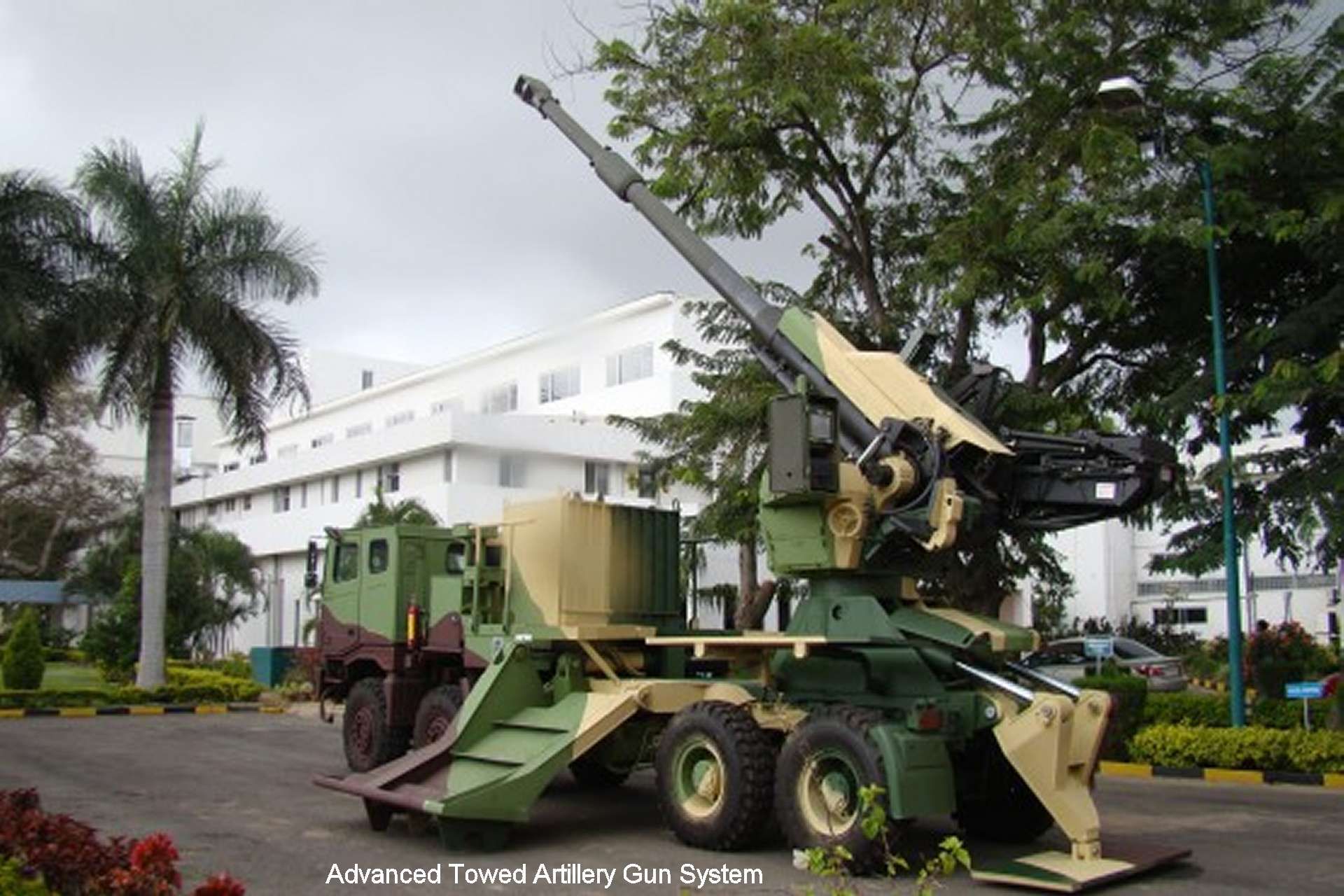
Tata Advanced Systems and Bharat Forge Advanced Towed Artillery Gun System 155mm/52 caliber (Picture source: Wikimedia)
Bharat-52
The Bharat-52 is another 155mm/52 caliber towed howitzer, developed by Bharat Forge, a subsidiary of the Kalyani Group. This cannon, designed to be operational in all weather conditions and terrains, has an effective firing range of 41 km. It is distinguished by its ability to fire three shots in 30 seconds and 42 shots in an hour in sustained mode. The Bharat-52 has been designed to offer exceptional maneuverability and high mobility on the battlefield, making it ideal for use in varied environments, including mountainous border areas.
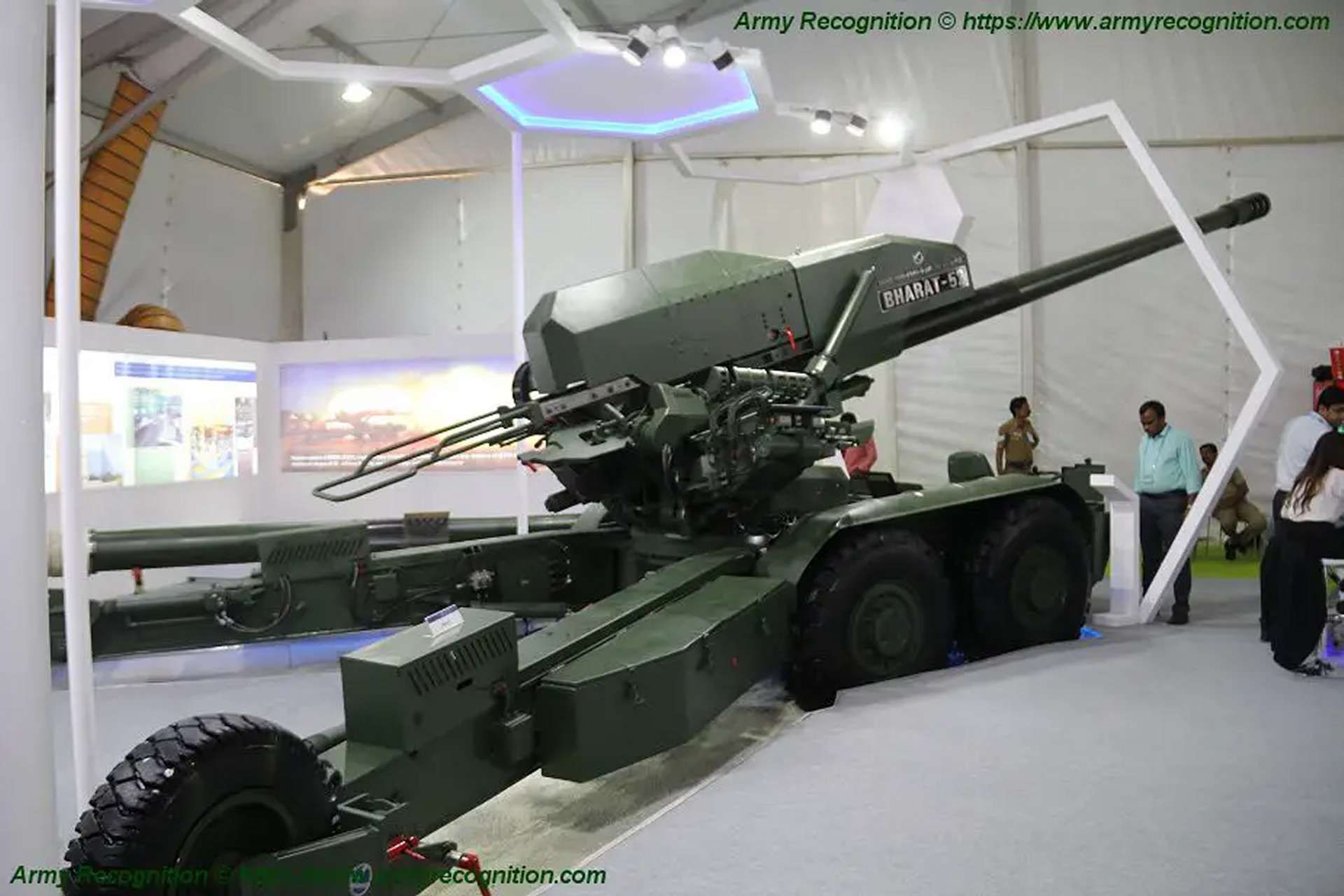
Bharat Forge Bharat-52 155mm/52 Caliber Towed Howitzer (Picture source : Army Recognition)
Trajan 155mm/52 caliber
The Trajan, developed by Nexter Systems in France, is a 155mm/52 caliber towed artillery system, designed to be extremely precise and powerful. It can be positioned for firing in less than 1 minute and 30 seconds, thanks to advanced automation that facilitates firing and movement operations. The system is derived from the Caesar, a truck-mounted howitzer that has proven itself in combat conditions in Afghanistan. The Trajan is particularly valued for its effectiveness in supporting mechanized and armored units.
As a reminder, the Trajan was in the past involved in competitive evaluations but was not ultimately chosen as the preferred system. Instead, the Indian Army has shown a greater inclination towards indigenously developed artillery systems like the Advanced Towed Artillery Gun System (ATAGS). We will see through this new tender whether the Trajan might regain interest from the Indian government following the proven effectiveness of the Caesar cannon in Ukraine, from which this cannon is partly derived.
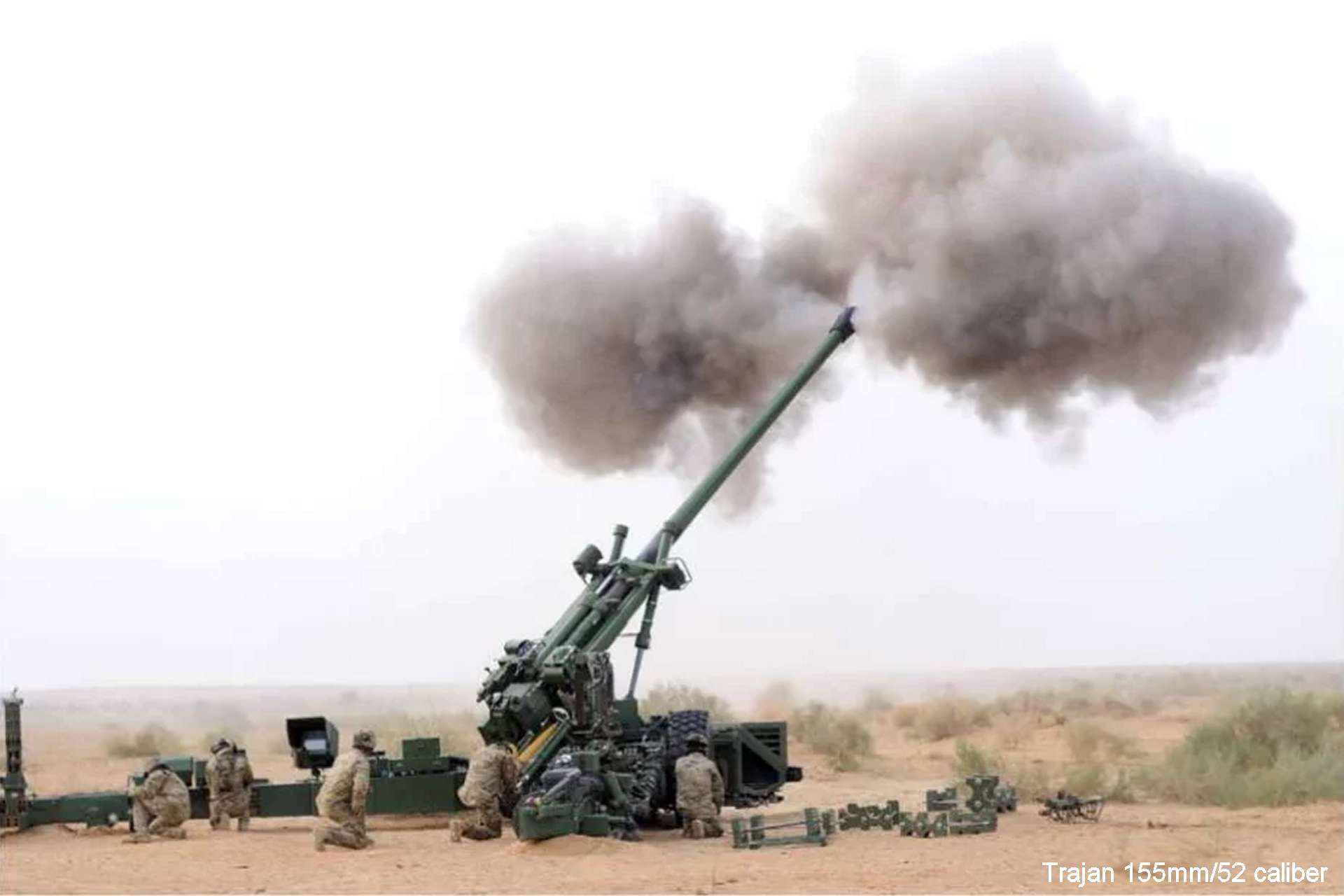
Larsen & Toubro Trajan 155mm/52 caliber (Picture source: Nexter Larsen & Toubro)
ATMOS 155mm/52 caliber
The ATMOS is a truck-mounted artillery system developed by Elbit Systems, offered in a towed version by Adani Defence and Aerospace. Known for its modularity and ease of deployment, the ATMOS is designed for high mobility, making it particularly suited for operations in difficult terrains. Although specific details on the towed version are not fully disclosed, the truck-mounted system has a maximum range of about 41 km with a high rate of fire, similar to other 155mm/52 caliber systems.
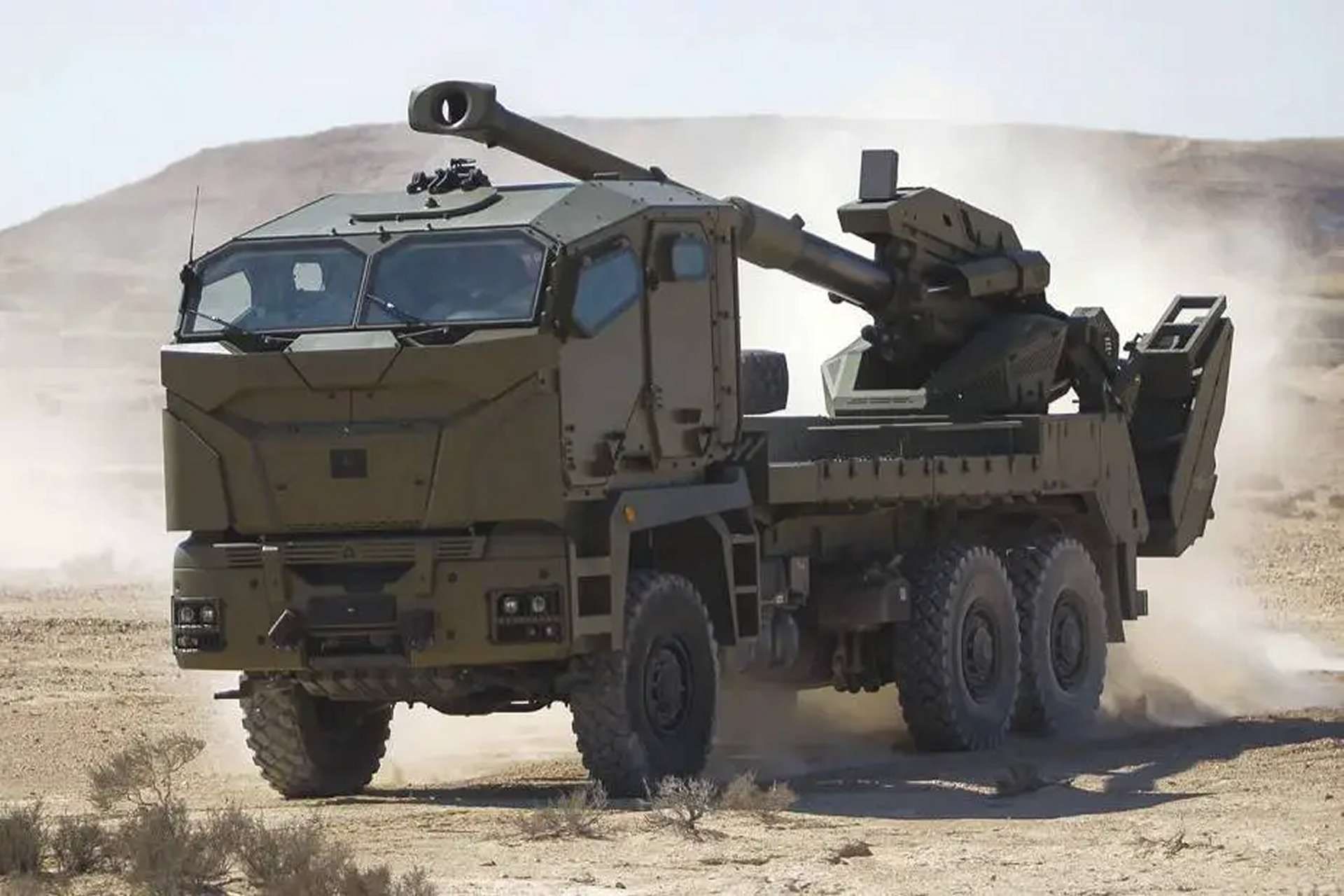
Adani Defence and Aerospace ATMOS 155mm/52 caliber (Picture source: Elbit Systems)
The Indian Army is expected to make a decision on awarding this contract in the coming months, with an obligation for the selected bidder to provide logistical and maintenance support for a ten-year period. This acquisition is crucial for the modernization of Indian artillery, thereby strengthening its operational capabilities and supporting the national defense industry. International collaborations, particularly with European partners, are also essential to ensure that new technologies meet global standards and strengthen India's strategic position in the region.
The use of Indian artillery cannons along the country's borders is primarily dictated by geostrategic contexts and historical conflicts with its neighbors, mainly Pakistan and China. These border areas, often located in difficult terrains and hostile environments, are critical for national security, and artillery plays a key role in defending these regions.
The Line of Control (LoC) is the de facto border that separates India from Pakistan in the disputed region of Jammu and Kashmir. This region has been the site of numerous conflicts since the partition of India in 1947, including the Indo-Pakistani wars of 1947-1948, 1965, and 1971, as well as the Kargil conflict in 1999.
Artillery is frequently used along the LoC to respond to ceasefire violations and support defense operations. Artillery guns, such as the Bofors FH-77B and newer systems like the K9 Vajra-T, are deployed for their ability to fire at long range, thus targeting enemy positions across mountainous terrain. The acquisition of new artillery systems aims to enhance these capabilities, particularly with lighter and more mobile guns, suited for mountainous conditions.
The Actual Line of Control (LAC) separates India and China along the Himalayan border, another contested area. Tensions between India and China have been particularly heightened since the Sino-Indian War of 1962, and more recently, by clashes in the Ladakh region in 2020.
Conditions in these regions are extremely challenging, with high altitudes and freezing temperatures, making the mobility and performance of artillery systems critical. Guns like the M777 ultra-light, which can be airlifted by helicopter, and the K9 Vajra-T, which has been specially adapted for high-altitude conditions, are essential for defending the LAC. These systems allow the Indian Army to respond quickly to any incursion and maintain a deterrent posture against Chinese forces.
According to Military Balance 2023, India currently employs the following towed howitzers: approximately 1,350 units of 105mm howitzers, including over 600 Indian Field Guns (IFG) Mk1/Mk2/Mk3 and up to 700 Light Field Guns (LFG), along with 50 Soltam M-56 guns. For 122mm howitzers, India has 520 D-30 guns. In the 130mm category, around 600 M-46 guns are in service, with 500 of them in storage. Finally, for 155mm howitzers, India possesses around 625 units, including approximately 300 FH-77B guns, around 200 modified M-46 guns, and 125 M777A2 guns.
Conflicts with Pakistan originate from the 1947 partition, which led to the creation of Pakistan as a separate nation and the dispute over sovereignty in the Jammu and Kashmir region. Both countries have since been involved in several wars and lower-intensity confrontations. The Kashmir region remains a major point of tension, fueled by religious, political, and territorial factors.
The conflict with China is primarily due to unresolved border disputes along the LAC. The 1962 war marked the beginning of open tensions, exacerbated by differing perceptions of historical borders and Chinese claims on Arunachal Pradesh, a region China considers part of Tibet. Recent tensions have been fueled by increased military infrastructure on both sides and reciprocal incursions into contested territories.


























